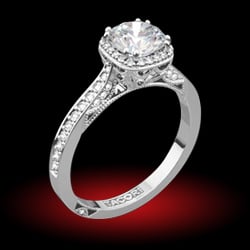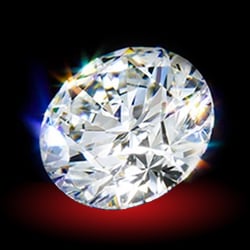- Joined
- May 25, 2005
- Messages
- 538
Many of you (203 to be precise) have participated in our survey on gemstone treatments. Thanks for your in-put.
All details are now online. We welcome everybody to dig for details or special interest topics.
Here are a few high-lights and extracts:
Two out of three professionals were optimistic about the future of the trade. Consumer spending habits were seen as biggest thread.
Regarding treatments, only spinel has maintained a somewhat pure image, but no variety is above suspicion anymore.
While all consumers thought that testing for gemstone treatment is the sole responsibility of the seller, most professionals said that buyers are, or at least sometimes ought to be, willing to pay between 5-10% of the sales price for a certificate.
On average, participants estimated that a treated gem is 50-60% less valuable than an, outwardly equal, all-natural gem. This number, however, deserves differentiation. The following list shows the loss-of-value which consumers and pros thought a treatment "inflicts" on a gemstone.
Type of Treatment:
a) Value-loss for Consumers
b) Value-loss for Professional
Heat
a) 35 %
b) 30 %
Radiation
a) 62 %
b) 54 %
Filling / Diffusion
a) 71 % / 69 %
b) 77 % / 75 %
Oiling
a) 35 %
b) 31 %
Unknown
a) 67 %
b) 45 %
Reading Example: Compared to an all-natural gem, consumers would expect to pay 35% less for a heated gemstone. Professionals estimated the value reduction from heating at only 30% (all else equal).
Remarks:
• For consumers, an "unknown gemstone treatment" is as bad as a real one; pros are less sensitive about undisclosed treatments
• Though assessments vary in detail, the main directions are clear
• Psychologically (though not scientifically) surprising, radiation was thought to be less value damaging than filling or diffusion
All-in-all, the time of innocence, or ignorance depending on where you stand, are over!
Consumers have made their homework and know what they buy, or won't buy, or if at what price. Professionals will have to keep up-dated and offer full disclosure.
We will improve and repeat this survey next year and compare the results.
All details are now online. We welcome everybody to dig for details or special interest topics.
Here are a few high-lights and extracts:
Two out of three professionals were optimistic about the future of the trade. Consumer spending habits were seen as biggest thread.
Regarding treatments, only spinel has maintained a somewhat pure image, but no variety is above suspicion anymore.
While all consumers thought that testing for gemstone treatment is the sole responsibility of the seller, most professionals said that buyers are, or at least sometimes ought to be, willing to pay between 5-10% of the sales price for a certificate.
On average, participants estimated that a treated gem is 50-60% less valuable than an, outwardly equal, all-natural gem. This number, however, deserves differentiation. The following list shows the loss-of-value which consumers and pros thought a treatment "inflicts" on a gemstone.
Type of Treatment:
a) Value-loss for Consumers
b) Value-loss for Professional
Heat
a) 35 %
b) 30 %
Radiation
a) 62 %
b) 54 %
Filling / Diffusion
a) 71 % / 69 %
b) 77 % / 75 %
Oiling
a) 35 %
b) 31 %
Unknown
a) 67 %
b) 45 %
Reading Example: Compared to an all-natural gem, consumers would expect to pay 35% less for a heated gemstone. Professionals estimated the value reduction from heating at only 30% (all else equal).
Remarks:
• For consumers, an "unknown gemstone treatment" is as bad as a real one; pros are less sensitive about undisclosed treatments
• Though assessments vary in detail, the main directions are clear
• Psychologically (though not scientifically) surprising, radiation was thought to be less value damaging than filling or diffusion
All-in-all, the time of innocence, or ignorance depending on where you stand, are over!
Consumers have made their homework and know what they buy, or won't buy, or if at what price. Professionals will have to keep up-dated and offer full disclosure.
We will improve and repeat this survey next year and compare the results.







300x240.png)